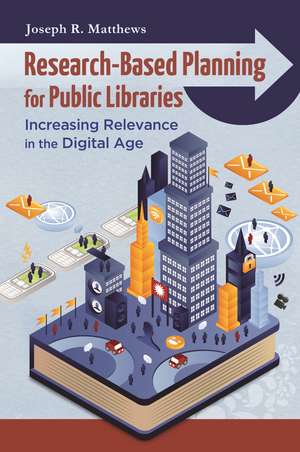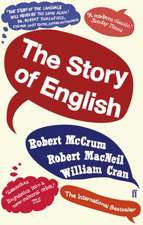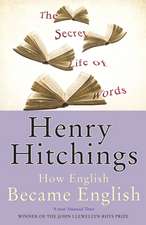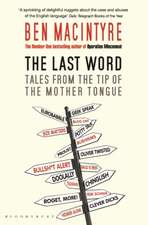Research-Based Planning for Public Libraries: Increasing Relevance in the Digital Age
Autor Joseph R. Matthewsen Limba Engleză Paperback – 23 oct 2013 – vârsta până la 17 ani
Preț: 299.01 lei
Preț vechi: 414.49 lei
-28% Nou
Puncte Express: 449
Preț estimativ în valută:
57.21€ • 59.90$ • 47.34£
57.21€ • 59.90$ • 47.34£
Carte tipărită la comandă
Livrare economică 05-19 aprilie
Preluare comenzi: 021 569.72.76
Specificații
ISBN-13: 9781610690072
ISBN-10: 1610690079
Pagini: 228
Ilustrații: 26
Dimensiuni: 156 x 235 x 14 mm
Greutate: 0.4 kg
Ediția:New.
Editura: Bloomsbury Publishing
Colecția Libraries Unlimited
Locul publicării:New York, United States
ISBN-10: 1610690079
Pagini: 228
Ilustrații: 26
Dimensiuni: 156 x 235 x 14 mm
Greutate: 0.4 kg
Ediția:New.
Editura: Bloomsbury Publishing
Colecția Libraries Unlimited
Locul publicării:New York, United States
Caracteristici
Presents a game plan to help public libraries become dynamic, pro-active institutions through well-researched and optimized planning and strategizing
Notă biografică
Joseph R. Matthews is a consultant who has assisted numerous academic, public, and special libraries in a wide variety of projects.
Cuprins
CONTENTSIntroductionChapter 1: It's Going to Be a Wild RideChapter 2: Understanding Your MarketChapter 3: Developing a PlanChapter 4: Selection PoliciesChapter 5: The Physical CollectionChapter 6: The Virtual LibraryChapter 7: Evaluating the CollectionChapter 8: Providing AccessChapter 9: Evaluating the LibraryReferencesIndex
Recenzii
Public library administrators and leaders of access services will benefit from this volume, as will students of access services. Those working in access services in other types of libraries may also benefit from this volume.
[M]ost useful to directors of libraries who are able to make some of the sweeping changes that Matthews suggests. . . . [R]eaders can take away a lot of statistics and references from the sizable resource list at the back of the book and start to develop their own small-scale versions of the ideas.
[M]ost useful to directors of libraries who are able to make some of the sweeping changes that Matthews suggests. . . . [R]eaders can take away a lot of statistics and references from the sizable resource list at the back of the book and start to develop their own small-scale versions of the ideas.













